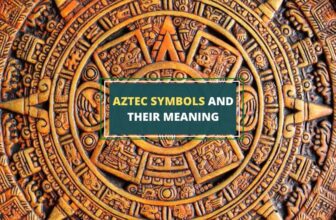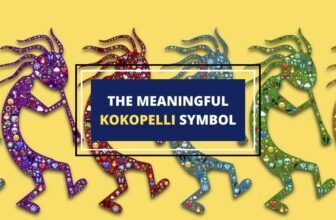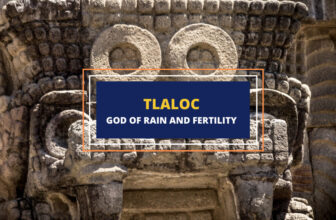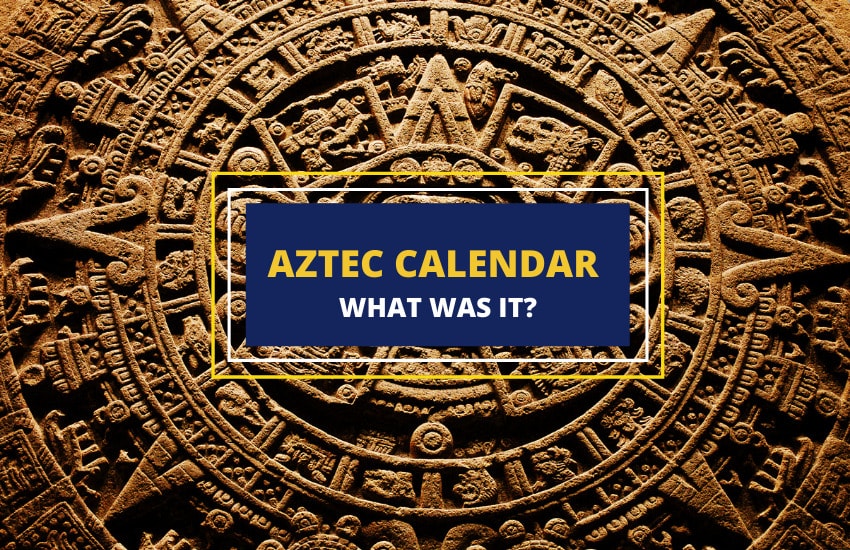
Table of Contents
The Aztec or Mexica calendar is one of several prominent Mesoamerican calendars. However, as the Aztec empire was in its heyday at the time of the arrival of the Spanish conquistadors, the Aztec calendar has remained one of the two most famous calendrical systems, together with the Mayan calendar.
But what exactly is the Aztec calendar? How sophisticated was it and how accurate was it compared to the Gregorian and other European and Asian calendars? This article aims to answer these questions.
What was the Aztec Calendar?
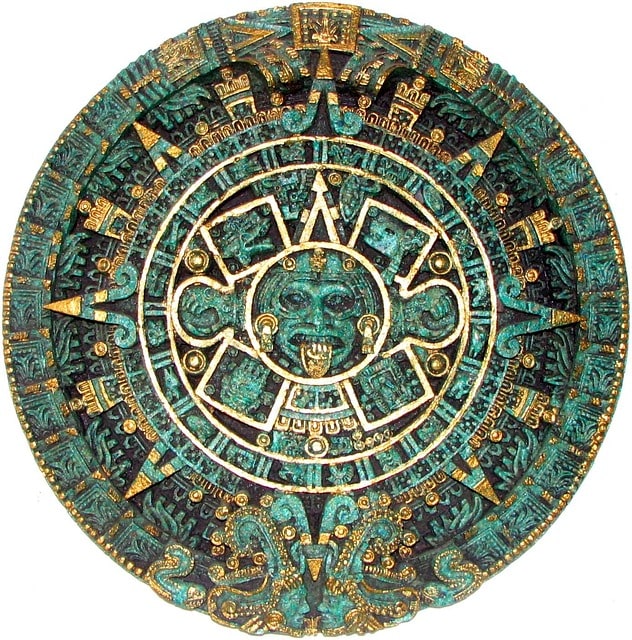
The Aztec calendar was based on other Mesoamerican calendars that had come before it and, therefore, it had a similar structure to them. What makes these calendrical systems special is that they are technically a combination of two cycles.
- The first, called Xiuhpōhualli or year count was a standard and practical seasons-based cycle and consisted of 365 days – almost identical to the European Gregorian calendar.
- The second, called Tōnalpōhualli or day count was a religious day cycle made of 260 days, each dedicated to a specific god. It informed the rituals of the Aztec people.
Together, Xiuhpōhualli and Tōnalpōhualli cycles formed the Aztec calendar. In essence, the Aztec people had two calendar years – one “scientific” calendar based on the seasons and the agricultural needs of the people, and one religious calendar that progressed independently of the first.
So, for example, while in the Gregorian calendar specific religious holidays always fall on the exact same day of the year (Christmas on the 25th of December, Halloween on the 31st of October, and so on), in the Aztec calendar the religious cycle isn’t tied to the seasonal/agricultural cycle – the 365 days of the latter would cycle on independently from the 260 days of the former.
The only way in which the two were tied was that they would catch up to each other and restart every 52 years. That’s why the Aztec “century”, or Xiuhmolpilli consisted of 52 years. This period also had a major significance for the Aztec religion, as every 52 years the world could end if the Aztec hadn’t “fed” the sun god Huitzilopochtli with enough human sacrifices.
Xiuhpōhualli – The Agricultural Aspect of The Aztec Calendar
Below is a list of the editor’s top picks featuring Aztec Calendar.
The Aztec year (xihuitl) count (pōhualli) cycle, or Xiuhpōhualli, is similar to most seasonal calendars in that it consists of 365 days. However, the Aztecs likely took that from other Mesoamerican cultures, such as the Maya, as they had established their calendars long before the Aztecs migrated into central Mexico from the north.
Regardless, one of the several things that differentiated the Xiuhpōhualli cycle from European calendars is that 360 of its 365 days are placed in 18 months, or veintena, each 20-days long. The last 5 days of the year were left “unnamed” (nēmontēmi) days. Those were considered unlucky as they weren’t dedicated to (or protected by) any particular deity.
Unfortunately, the exact Gregorian dates of each Aztec month aren’t clear. We know what the names and symbols of each month were, but historians disagree on when exactly they started. The two leading theories are established by the two Christian friars, Bernardino de Sahagún and Diego Durán.
According to Durán, the first Aztec month (Atlcahualo, Cuauhitlehua) started on March 1 and lasted till March 20. According to Sahagún Atlcahualo, Cuauhitlehua started on February 2 and ended on February 21. Other scholars have suggested that the Aztec year started on the vernal equinox or Spring solar equinox which falls on March 20.
Regardless of who’s right, these are the 18 Aztec months of the Xiuhpōhualli cycle:
- Atlcahualo, Cuauhitlehua – Ceasing of Water, Rising Trees
- Tlacaxipehualiztli – Rites of Fertility; Xipe-Totec (“the flayed one”)
- Tozoztontli – Lesser Perforation
- Huey Tozoztli – Greater Perforation
- Tōxcatl – Dryness
- Etzalcualiztli – Eating Maize and Beans
- Tecuilhuitontli – Lesser Feast for the Revered Ones
- Huey Tecuilhuitl – Greater Feast for the Revered Ones
- Tlaxochimaco, Miccailhuitontli – Bestowal or Birth of Flowers, Feast to the Revered Deceased
- Xócotl huetzi, Huey Miccailhuitl – Feast to the Greatly Revered Deceased
- Ochpaniztli – Sweeping and Cleaning
- Teotleco – Return of the Gods
- Tepeilhuitl – Feast for the Mountains
- Quecholli – Precious Feather
- Pānquetzaliztli – Raising the Banners
- Atemoztli – Descent of the Water
- Tititl – Stretching for Growth
- Izcalli – Encouragement for the Land & People
18b. Nēmontēmi – The unlucky period of 5 unnamed days
This cycle of 18 months had proved very useful in governing the day-to-day life of the Aztec people, their agriculture, and every non-religious aspect of their lives.
As for how the Aztec people accounted for the “leap day” in the Gregorian calendar – it seems that they didn’t. Instead, their new year just always started at the same time of the same day, likely the vernal equinox.
The 5 nēmontēmi days were likely just five days and six hours each.
Tōnalpōhualli – the Sacred Aspect of The Aztec Calendar
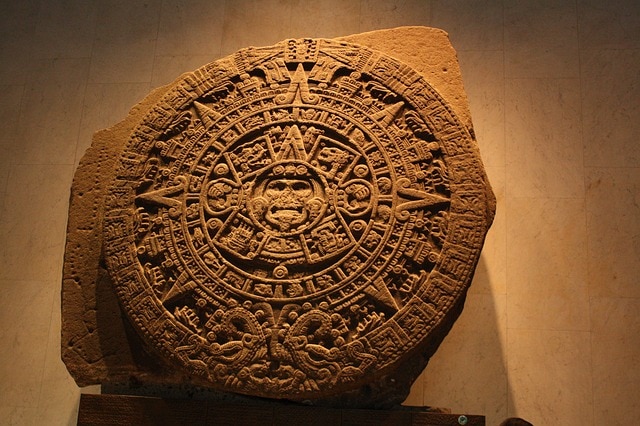
The Tōnalpōhualli, or day count cycle of the Aztec calendar, was made of 260 days. This cycle didn’t have any relation to the seasonal change of the planet. Instead, the Tōnalpōhualli had a more religious and symbolic significance.
Each 260-day cycle consisted of 13 trecena, or “weeks/months”, with each of them being 20 days long. Each of those 20 days had a name of a specific natural element, object, or animal which every trecena was marked by a number from 1 to 13.
The 20 days were named as such:
- Cipactli – Crocodile
- Ehēcatl – Wind
- Calli – House
- Cuetzpalin – Lizard
- Cōātl – Snake
- Miquiztli – Death
- Mazātl – Deer
- Tōchtli – Rabbit
- Ātl – Water
- Itzcuīntli – Dog
- Ozomahtli – Monkey
- Malīnalli – Grass
- Ācatl – Reed
- Ocēlōtl – Jaguar or Ocelot
- Cuāuhtli – Eagle
- Cōzcacuāuhtli – Vulture
- Ōlīn – Earthquake
- Tecpatl – Flint
- Quiyahuitl – Rain
- Xōchitl – Flower
Each of the 20 days would also have its own symbol to represent it. The Quiyahuitl/Rain symbol would be that of the Aztec rain god Tlāloc, for example, while the Itzcuīntli/Dog day would be depicted as the head of a dog.
In the same way, each day indicated a certain direction of the world too. Cipactli/Crocodile would be east, Ehēcatl/Wind would be north, Calli/House – west, and Cuetzpalin/Lizard – south. From there, the next 16 days would cycle the same way. These directions would also be related to the Nine Lords or Gods of Night in Aztec Astrology:
- Xiuhtecuhtli (lord of fire) – Center
- Itztli (sacrificial knife god) – East
- Pilzintecuhtli (sun god) – East
- Cinteotl (maize god) – South
- Mictlantecuhtli (god of death) – South
- Chalchiuhtlicue (water goddess) – West
- Tlazolteotl (goddess of filth) – West
- Tepeyollotl (jaguar god) – North
- Tlaloc (rain god) – North
Once the first 20 days of the Tōnalpōhualli would pass, that would be the end of the first trecena. Then, the second trecena would start and the days in it would be marked with the number two. So, the 5th day of the Tōnalpōhualli year was 1 Cōātl while the 25th day of the year was 2 Cōātl because it belonged to the second trecena.
Each of the 13 trecenas was also dedicated to and protected by a specific Aztec deity, with quite a few of them doubling from the previous count of the Nine Gods of Night. The 13 trecenas are devoted to the following gods:
- Xiuhtecuhtli
- Tlaltecuhtli
- Chalchiuhtlicue
- Tonatiuh
- Tlazolteotl
- Mictlantecuhtli
- Cinteotl
- Tlaloc
- Quetzalcoatl
- Tezcatlipoca
- Chalmacatecuhtli
- Tlahuizcalpantecuhtli
- Citlalincue
Xiuhmolpilli – The Aztec 52-year “Century”
The widely used name for the Aztec century is Xiuhmolpilli. However, the more accurate term in the native Aztec language of Nahuatl was Xiuhnelpilli.
Regardless of how we choose to call it, an Aztec century had 52 Xiuhpōhualli (365-day) cycles and 73 Tōnalpōhualli (260-day) cycles. The reason was strictly mathematical – the two calendars would re-align again after that many cycles. If, by the end of the century, the Aztec people hadn’t sacrificed enough people to the war god Huitzilopochtli, they believed the world would end.
However, to make matters even more complicated, instead of counting the 52 years with numbers, the Aztecs marked them by a combination of 4 words (tochtli, acati, tecpati, and calli) and 13 numbers (from 1 to 13).
So, the first year of each century would be called 1 tochtli, the second – 2 acati, the third – 3 tecpati, the fourth – 4 calli, the fifth – 5 tochtli, and so on till 13. However, the fourteenth year would be called 1 acati because thirteen doesn’t divide perfectly into four. The fifteenth year would be 2 tecpati, the sixteenth – 3 calli, the seventeenth – 4 tochtli, and so on.
Eventually, the combination of four words and 13 numbers would realign again and a second 52-year Xiuhmolpilli would begin.
What Year Is It Now?
If you’re curious, as of the writing of this text, we are in the year 9 calli (2021), near the end of the current Xiuhmolpilli/century. 2022 would be 10 tochtli, 2023 – 11 acati, 2024 – 12 tecpati, 2025 – 13 calli.
2026 would be the start of a new Xiuhmolpilli/century and will be called 1 tochtli again, provided that we’ve sacrificed enough blood to the war god Huitzilopochtli.
This site tells you what Aztec day it is today, along with all the relevant information for each day.
Why So Complicated?
As for why this is so convoluted and why the Aztecs (and other Mesoamerican cultures) even bothered with two separate calendrical cycles – we don’t really know.
Presumably, they had the more symbolic and religious Tōnalpōhualli 260-day calendar first before they invented the more astronomically correct Xiuhpōhualli 365-day cycle. Then, instead of disposing of the former cycle, they decided to use both at the same time, the old one for the older religious practices, and the new one for all practical matters such as farming, hunting, and foraging, and so on.
Wrapping Up
The Aztec calendar continues to enthrall those interested in history. The image of the calendar is used in jewelry, fashion, tattoos, home décor and more. It’s one of the most fascinating legacies left behind by the Aztecs.







